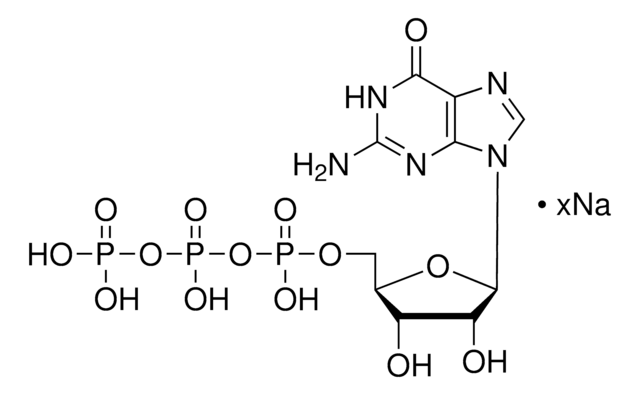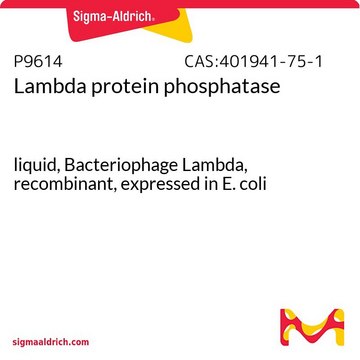P3895
Phosphatase, Alkaline from human placenta
≥10 units/mg solid (in glycine buffer)
Sinônimo(s):
Orthophosphoric-monoester phosphohydrolase (alkaline optimum)
About This Item
Produtos recomendados
forma
solid
Nível de qualidade
atividade específica
≥10 units/mg solid (in glycine buffer)
nº de adesão UniProt
temperatura de armazenamento
−20°C
Informações sobre genes
human ... ALPP(250)
Procurando produtos similares? Visita Guia de comparação de produtos
Aplicação
Ações bioquímicas/fisiológicas
Definição da unidade
inibidor
Palavra indicadora
Danger
Frases de perigo
Declarações de precaução
Classificações de perigo
Resp. Sens. 1
Código de classe de armazenamento
10 - Combustible liquids
Classe de risco de água (WGK)
WGK 1
Ponto de fulgor (°F)
Not applicable
Ponto de fulgor (°C)
Not applicable
Certificados de análise (COA)
Busque Certificados de análise (COA) digitando o Número do Lote do produto. Os números de lote e remessa podem ser encontrados no rótulo de um produto após a palavra “Lot” ou “Batch”.
Já possui este produto?
Encontre a documentação dos produtos que você adquiriu recentemente na biblioteca de documentos.
Os clientes também visualizaram
Nossa equipe de cientistas tem experiência em todas as áreas de pesquisa, incluindo Life Sciences, ciência de materiais, síntese química, cromatografia, química analítica e muitas outras.
Entre em contato com a assistência técnica







